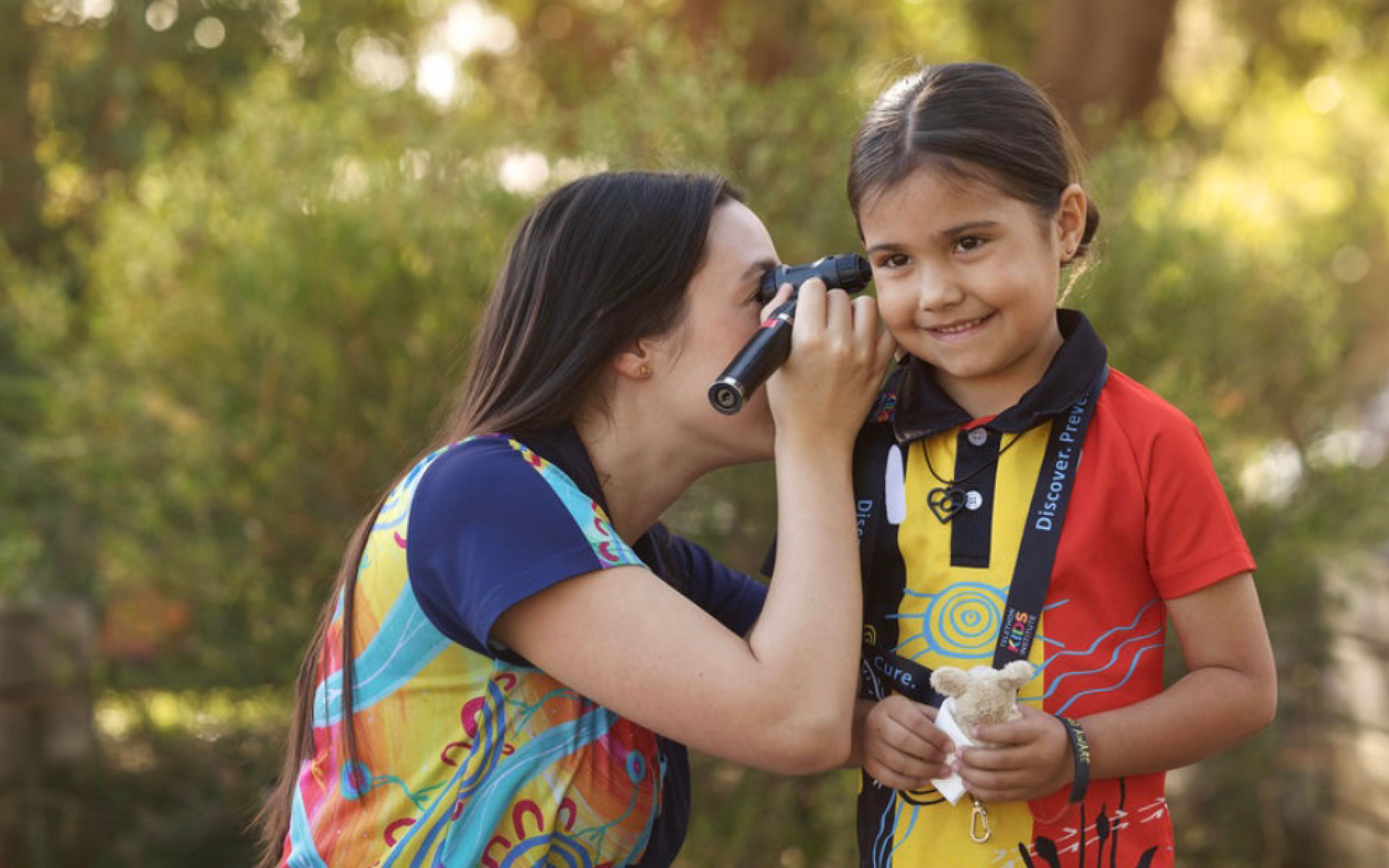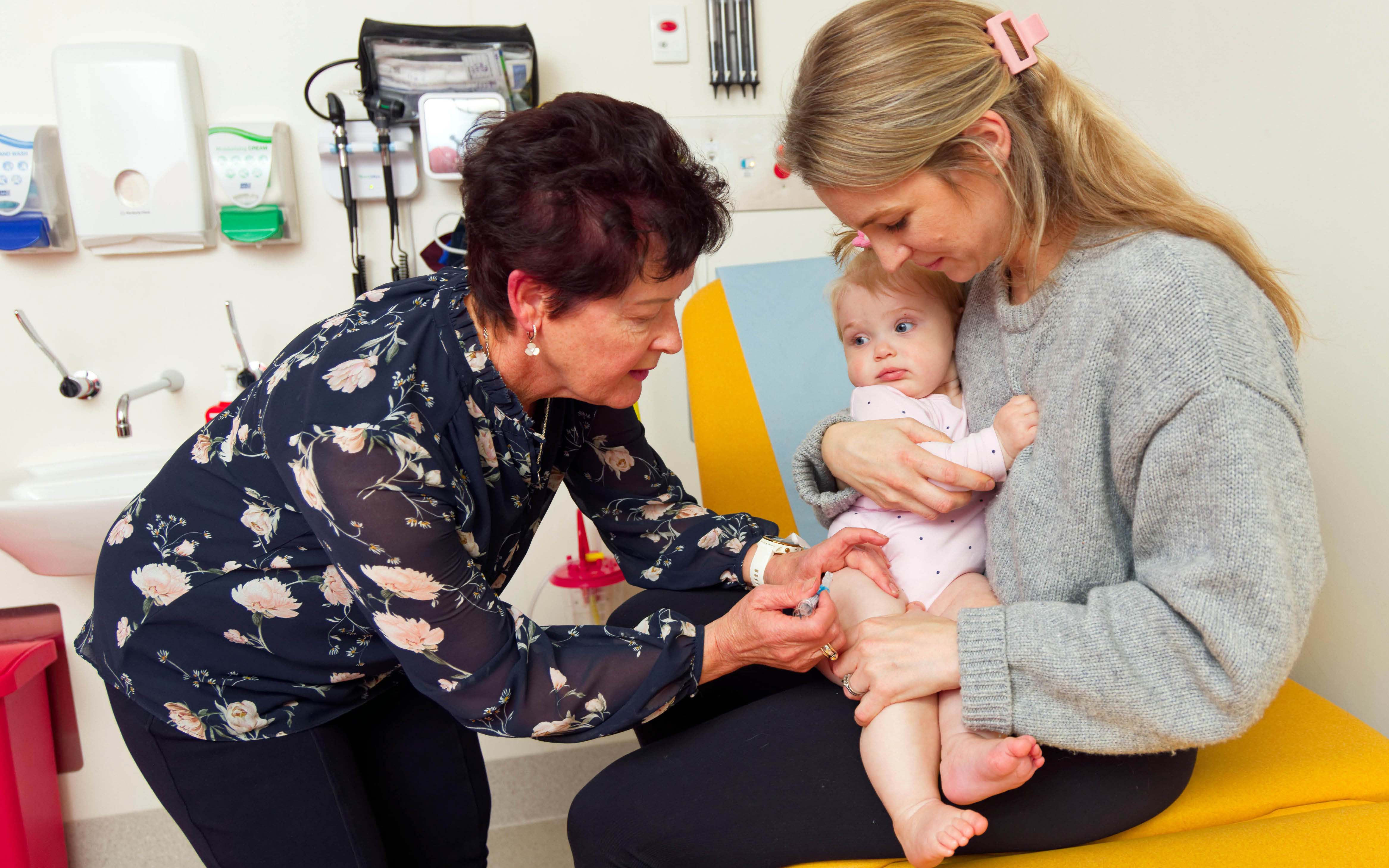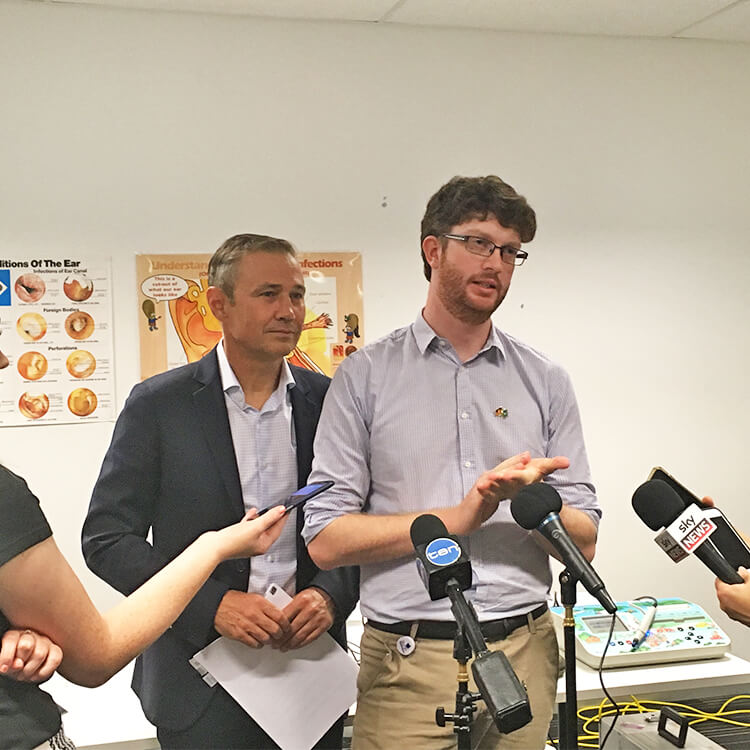How common are middle ear infections?
Middle ear infections (otitis media) are the most common types of ear infections in children. Babies and young children are susceptible because the (Eustachian) tube that connects the back of the nose to the middle ear is smaller, making it easier for germs to reach the middle ear from the nose.
Up to 20 per cent of children have more than three middle ear infections between one and two years of age, with some experiencing hearing loss and speech difficulties. Otitis media is almost universal in Aboriginal children, starting very early in life, often with no symptoms until complications such as ear discharge, hearing loss or delayed speech are noted.
How are middle ear infections treated?
For some children, the sticky fluid behind the eardrum causing otitis media doesn't go away; this "glue ear" makes it harder to hear. About 3800 operations are carried out in WA each year, where tiny tubes, or grommets, are inserted into the eardrum to drain fluid and ventilate the middle ear. Thirty per cent of these children need repeat grommet surgery due to re-infection.
Community-based studies and outreach
The Kids Research Institute Australia's Kalgoorlie Otitis Media Research Project, conducted in young Aboriginal and non-Aboriginal children, found that high rates of carriage of bacteria in the nose, exposure to tobacco smoke and overcrowding were major factors leading to otitis media. The Pina Palya, Pina Kulilku (Good Ears, Good Learning) health promotion program was then implemented in collaboration with Aboriginal groups in the Goldfields targeting passive smoking and recommending frequent hand washing and regular ear checks.
A high proportion of Aboriginal people now live in urban areas but little is known about otitis media in this population. A project is looking into how many Aboriginal children suffer from otitis media in the south-east Perth metropolitan area, what people know and do about it, what services are available and what the impact of otitis media and its complications is on children and their families.
*If your child has frequent earaches, fluid in the middle ear, persistent ear discharge or has trouble hearing, seek medical advice.
Our research impact
Molecular ‘omics-based approaches are being employed at The Kids Research Institute Australia to identify the genetic and environmental factors that predispose children to recurrent ear infections. These include studies of genetic risk factors, analysis of genes being expressed in middle ear fluids, and of the microbial communities (often called the microbiome) found at the back of the nose and in the middle ear. This could contribute to improved preventative and therapeutic strategies to reduce the incidence of this disease.
A clinical trial is investigating whether a cystic fibrosis treatment may be able to dissolve the "glue" in glue ear, reducing the need for antibiotics and further surgery. Dornase alfa – a drug that breaks up thick secretions in the lungs of cystic fibrosis patients - has been applied in one ear at the time of grommet insertion and the outcome will be compared with that in the other untreated ear.
In a separate study, researchers are looking at whether a harmless bacterium, Haemophilus haemolyticus, that lives in the respiratory tract can be used to prevent nontypeable Haemophilus influenzae infection, a major cause of ear infections in Australia.





